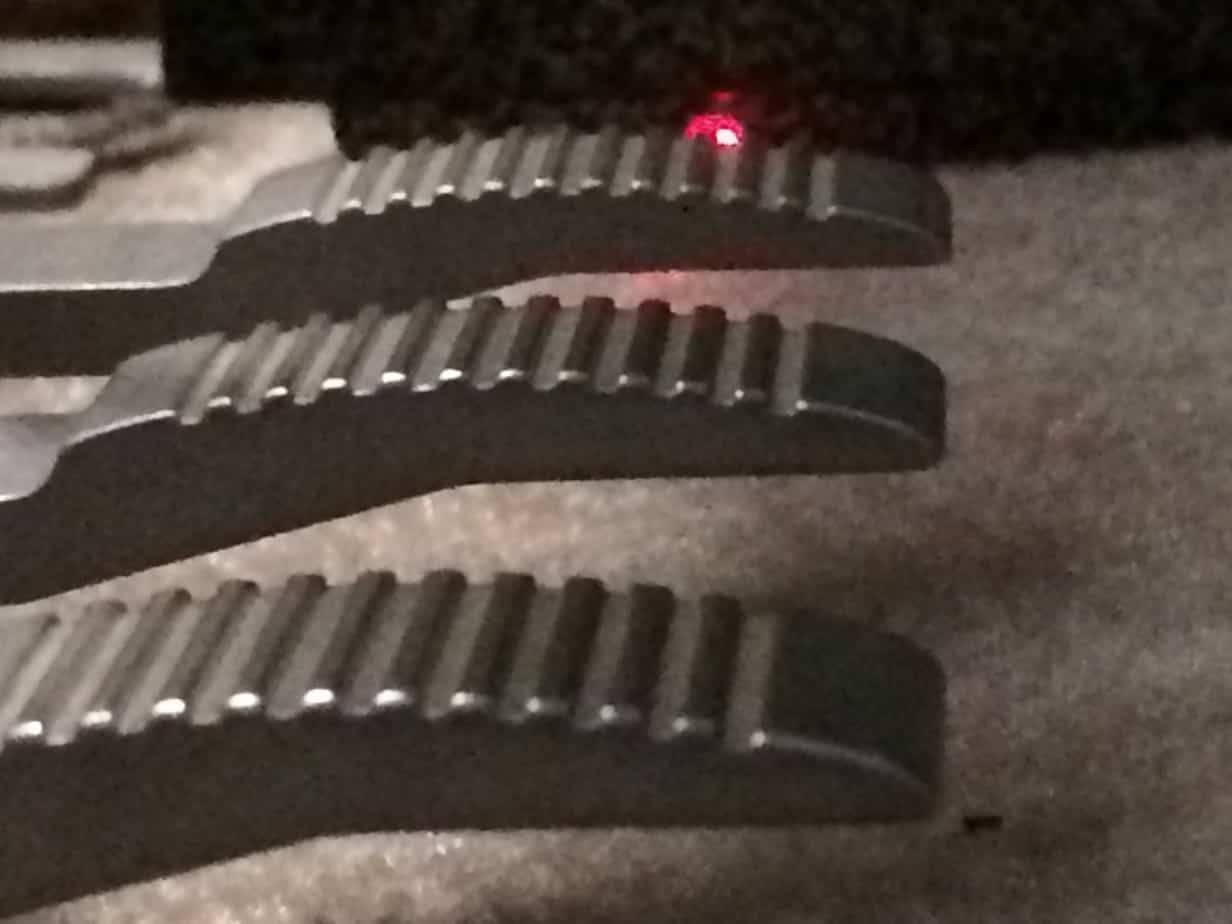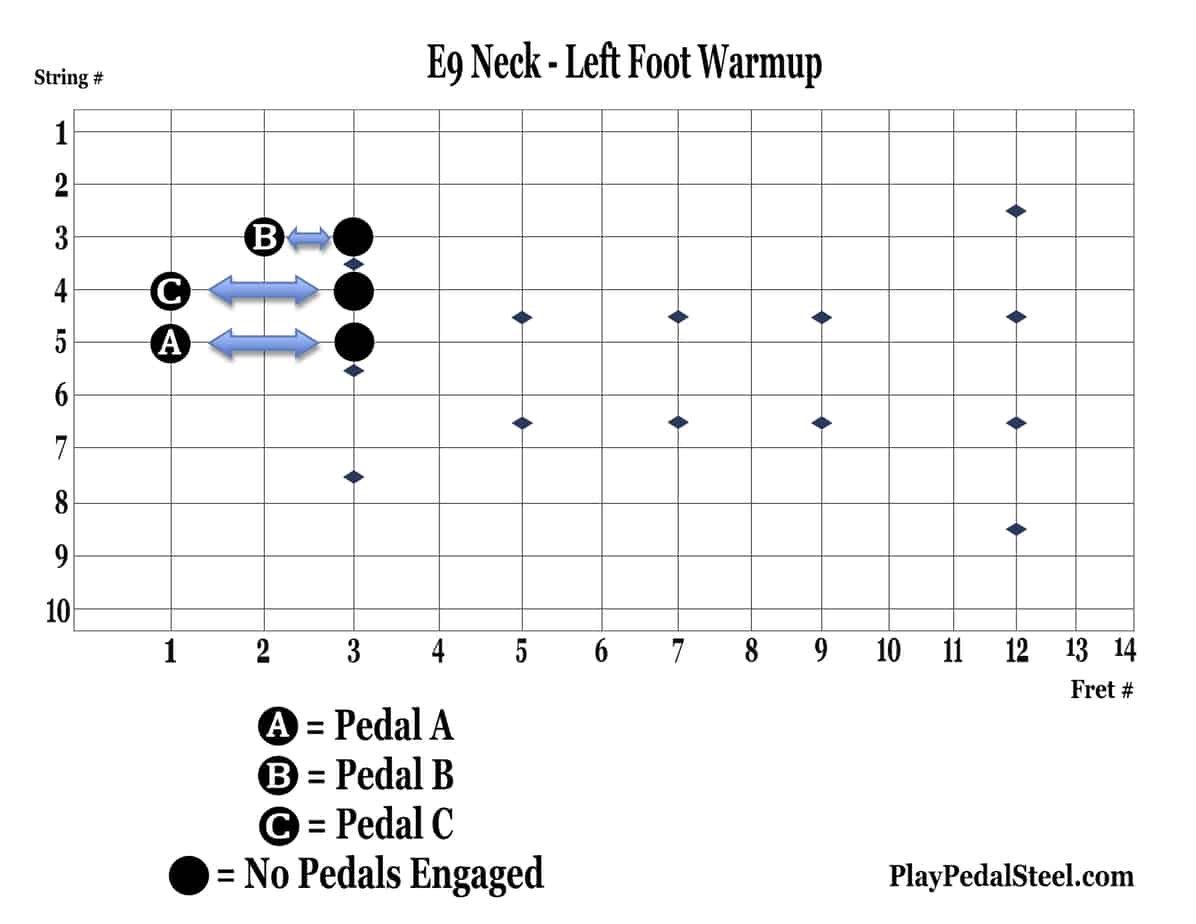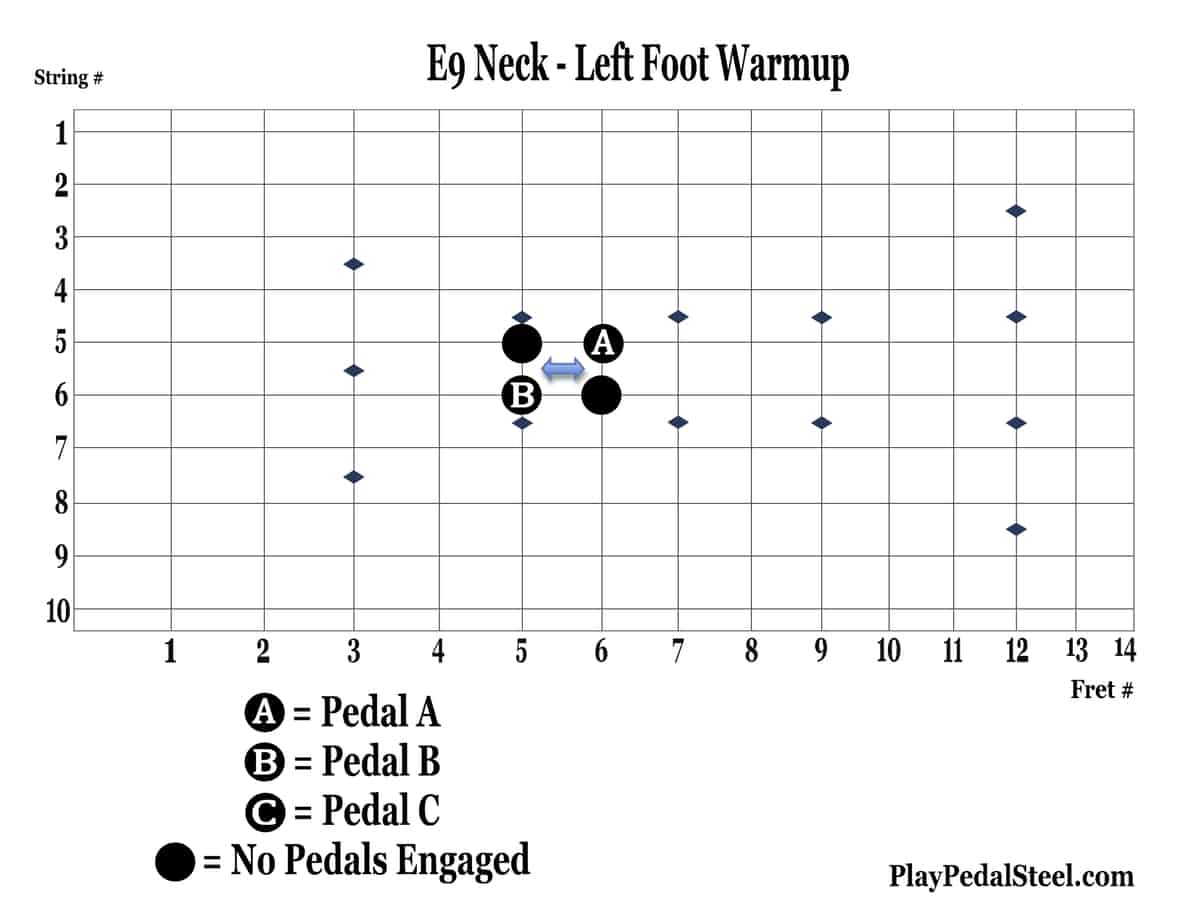It can be very beneficial to warmup at the beginning of your playing or practice session. Since the pedal steel is such a physical instrument, it is very similar to playing a sport in that it requires certain movements/exertions to achieve certain goals.
Warming up (stretches, exercises, drills, etc.) is almost standard for any sport, and for pedal steel playing it can be very helpful to do the same. A basketball player may shoot some hoops from various positions on the court to warmup; a pedal steel player could work on various “shots” or “techniques” on their instrument to warmup too.
By focusing a little time on technique, a player can calibrate their playing by rehearsing certain movements and motions. This can also help focus the mind for playing. Here is a great exercise to warmup your left foot and pedal technique for playing sessions, while also building strong playing habits…
Spend 5-10 minutes on this warmup exercise. It focuses on slow pedal movements to gain maximum control and precision with one’s left foot. It will isolate the A, B, and C pedals, allowing one to work on these individual movements and foot positioning too.
Here’s how the exercise works:
If you engage the A pedal on the E9 neck, which raises our pitch two half steps on strings 5+10, and fret the bar at fret position 1, you have a D note on these strings. Now slowly disengage the pedal, while sliding up two frets and you have the same note since you disengaged the pedal and moved the bar up two half steps simultaneously. Since these are the same notes, if you gradually slide between these two positions (engaged 1st fret, disengaged 3rd fret) while gradually (dis)engaging the pedal, you shouldn’t hear a change in pitch. This is easier to do quickly! But can you do it super slow, and avoid microtones?!!!
Here’s the trick:
If you do this process and move the bar real slowly from the 1st fret position (engaged pedal) up towards the 3rd fret position (disengaged pedal) – but only move the bar super slow, and you want to keep the pitch constant — your foot will need to engage/disengage the pedal just as slow as the bar moves, until you reach your destination. By doing these movements at a very slow speed, a player can really crystallize their foot technique and muscle memory, while strengthening the muscles used.
This exercise can also be effective in warming up with the B and C pedals…
- For the B pedal – do the same process but use the 3rd string. The 2nd fret position will have the pedal engaged, while the 3rd fret position will have it disengaged.
- For the C pedal – do the same process but use the 4th string. The 1st fret position will have the pedal engaged, while the 3rd fret position will have the pedal disengaged. This movement is very similar to the A pedal’s warmup mentioned above.
This chart can help visually display these movements, and can be a great practice tool (click for larger view)…
Also, a great way to warmup the left foot and ankle is to work on “rocking” motions: a very important technique for using the A and B pedals simultaneously on the E9 neck. I find the following movement to be very efficient in warming up the foot/ankle for this reason…
Starting with only the B pedal engaged, and using strings 5+6 at the fifth fret, pick this string grouping then slowly slide the bar up one fret while releasing the B pedal, and engaging the A pedal. This will require the ankle to make a larger movement, by requiring it to rock towards the A pedal, and avoid engaging the B pedal once it arrives at the A pedal engaged position.
The following diagram (click for larger view) helps visually display this exercise/movement:
Notice how on the 6th string, our pitch will not change after the disengagement of the B pedal and the slide up one fret…just like the previous exercises. A player should hear almost no change with this note, and try to avoid hearing microtones to keep it smooth. The 5th string and A pedal movement will produce a change in pitch/note and should be audibly smooth as well.
This movement is challenging, but gives a player the capability of hitting the A pedal by itself, the B pedal by itself, and building the muscles commonly used for rocking on/off the A pedal with the B pedal engaged. It is a move that can be found in Buddy Emmons’ “Blue Jade,” and can be used in many variations when playing pedal steel.
For more info related to the foot pedals, check these pages out…



